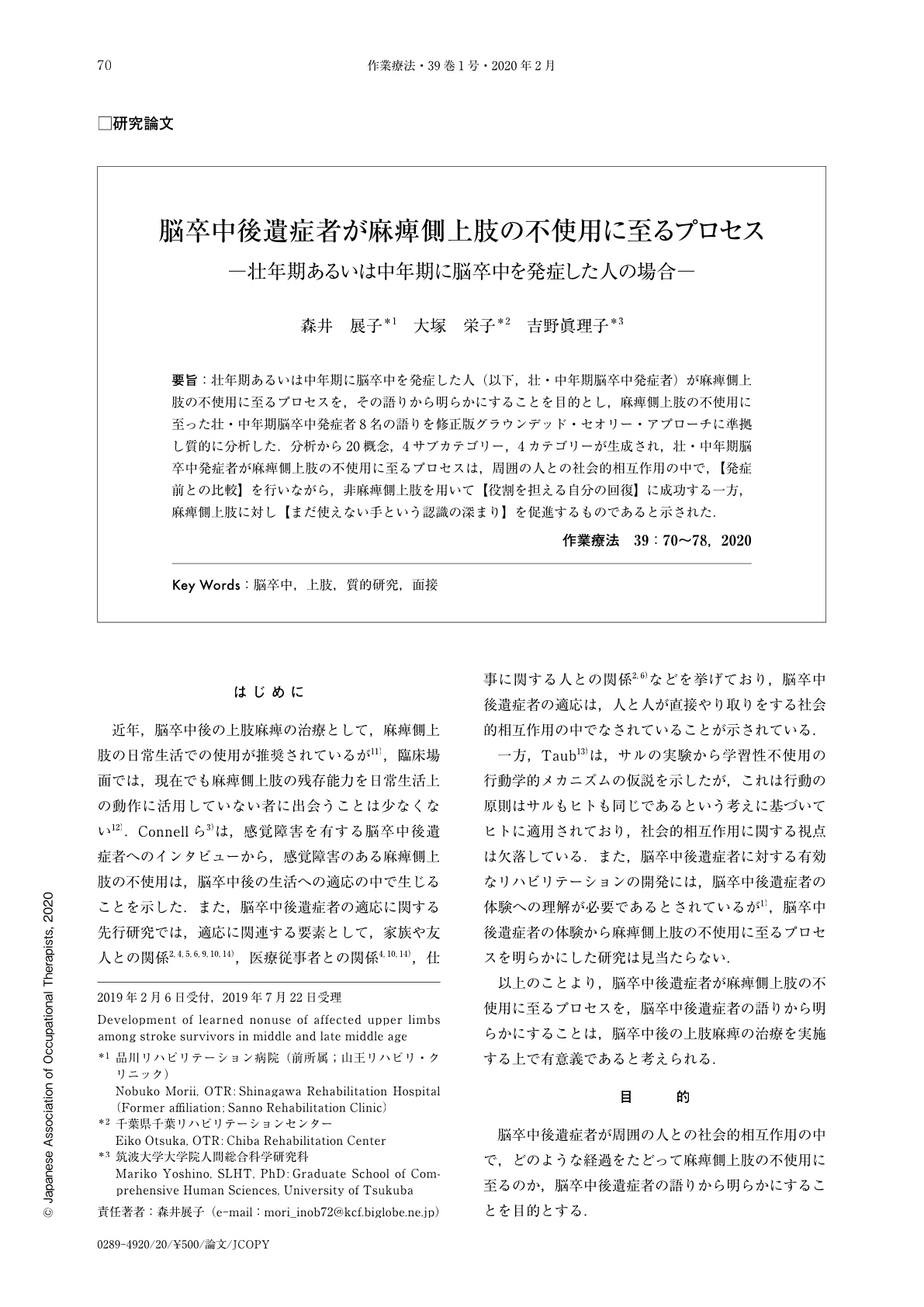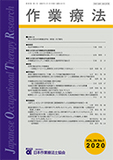Japanese
English
- 販売していません
- Abstract 文献概要
- 1ページ目 Look Inside
- 参考文献 Reference
要旨:壮年期あるいは中年期に脳卒中を発症した人(以下,壮・中年期脳卒中発症者)が麻痺側上肢の不使用に至るプロセスを,その語りから明らかにすることを目的とし,麻痺側上肢の不使用に至った壮・中年期脳卒中発症者8名の語りを修正版グラウンデッド・セオリー・アプローチに準拠し質的に分析した.分析から20概念,4サブカテゴリー,4カテゴリーが生成され,壮・中年期脳卒中発症者が麻痺側上肢の不使用に至るプロセスは,周囲の人との社会的相互作用の中で,【発症前との比較】を行いながら,非麻痺側上肢を用いて【役割を担える自分の回復】に成功する一方,麻痺側上肢に対し【まだ使えない手という認識の深まり】を促進するものであると示された.
Objective:The purpose of this study is to investigate the processes through which stroke survivors develop learned nonuse of their affected upper limbs. Design: A qualitative study design based on the Modified Grounded Theory Approach was used. Methods: Semi-structured interviews were carried out with stroke survivors who had strokes in middle age or late middle age and developed learned nonuse of their affected upper limbs. Results: 8 stroke survivors were interviewed in this study, and analysis resulted in the emergence of 20 concepts, 4 subcategories, and 4 categories. Conclusion: The middle age and late middle age stroke survivors developed learned nonuse of their affected upper limbs under the influence of social interaction, and they repeatedly compared their current condition to before the onset, and they recovered through taking on the same roles as before the onset.

Copyright © 2020, Japanese Association of Occupational Therapists. All rights reserved.


